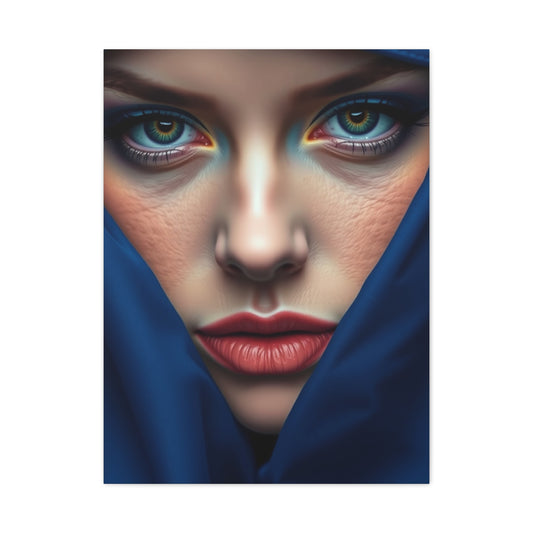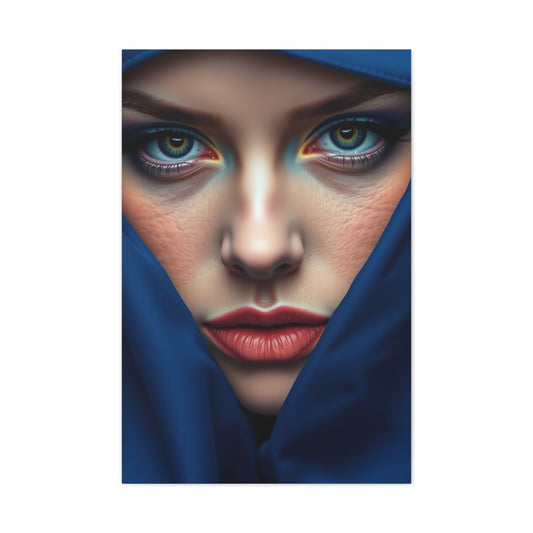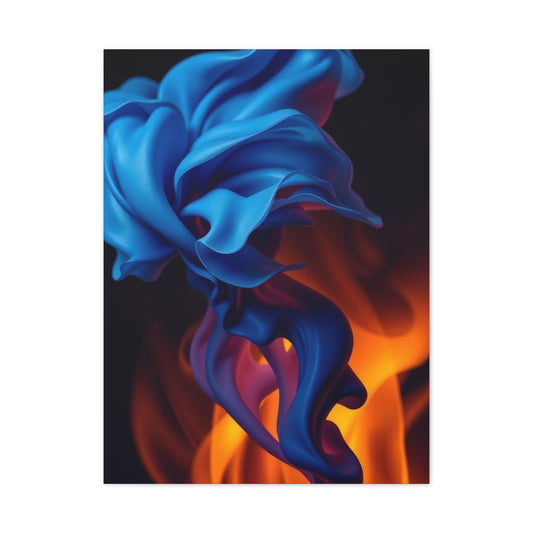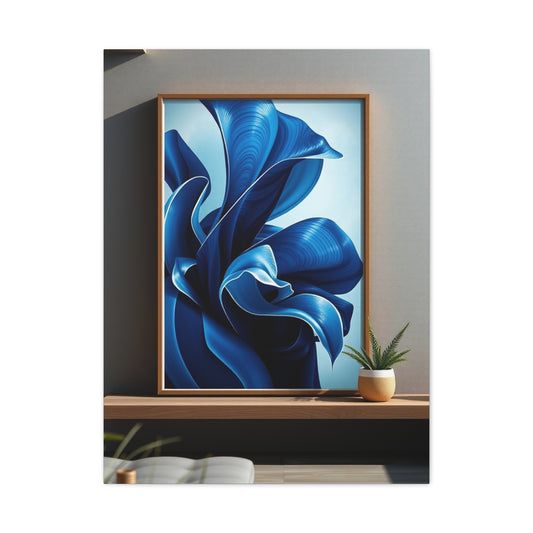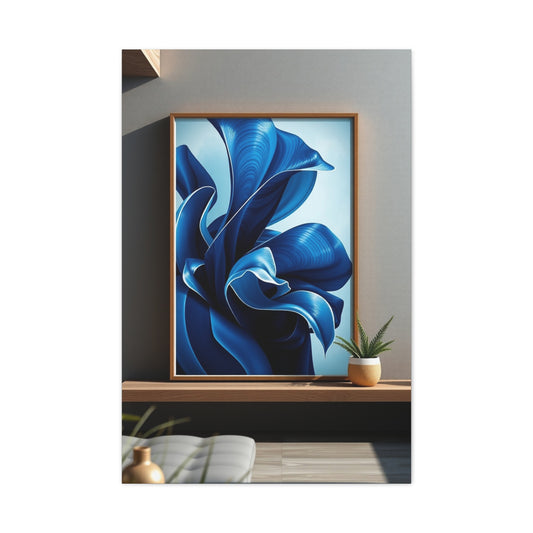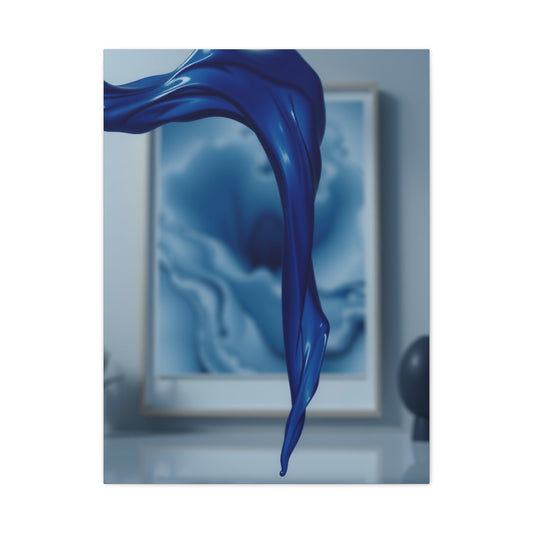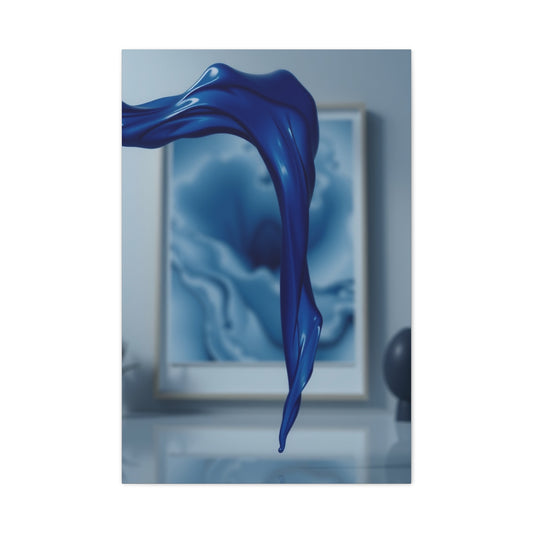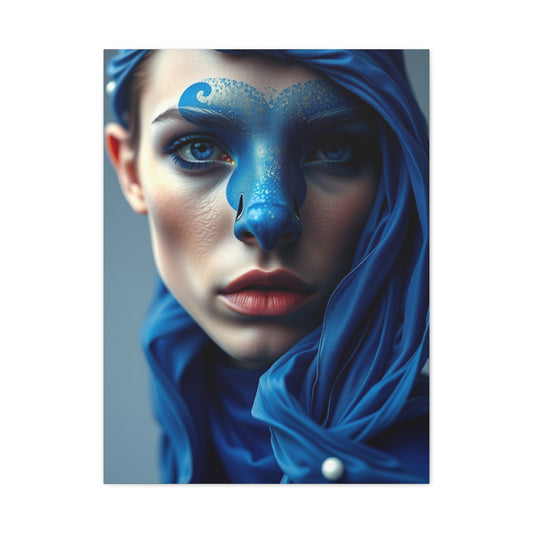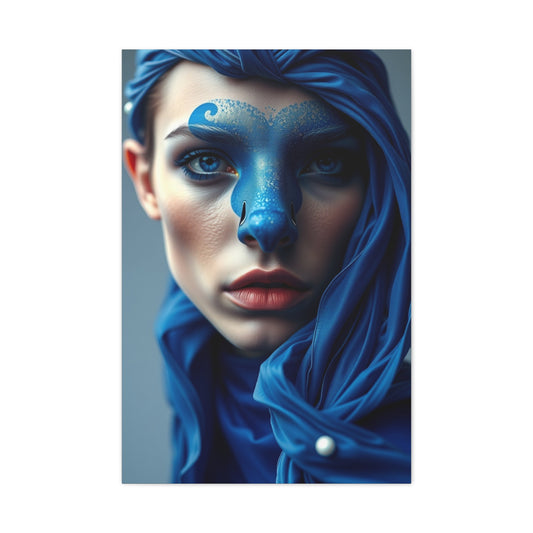Arranging wall art is a wonderful opportunity to express your creativity and personalize your living space. With the right approach, you can turn your walls into striking displays that showcase your unique style. Whether you’re aiming for a calming ambiance or a bold statement, these simple design techniques will help you create visually captivating arrangements. Read on to discover how to arrange wall art in a way that enhances your space and makes your walls stand out.
Mastering the Art of Styling a Gallery Wall with Wall Art: Tips for Perfect Arrangements
A gallery wall is an excellent way to bring personality, visual interest, and a sense of creativity to any room. It allows you to display a collection of artwork that reflects your unique style, interests, and taste, all in one cohesive arrangement. Whether you're showcasing your favorite photographs, abstract pieces, vintage posters, or a combination of art styles, a gallery wall can transform a blank wall into an artistic focal point.
The key to styling a gallery wall lies in carefully selecting and arranging your art pieces in a way that feels balanced and intentional. This guide will walk you through the process of creating a stunning gallery wall, offering expert tips on how to choose, arrange, and hang wall art. By the end, you’ll have the knowledge to create a space that feels stylish, cohesive, and full of personality.
|
Related Catagories: |
|
Drake Wall Art Canvas Photo Prints
|
Selecting the Right Art Pieces for Your Gallery Wall
The first step in creating a gallery wall is selecting the artwork you want to display. The beauty of a gallery wall is that it allows you to incorporate multiple pieces, so you can have a diverse mix of art while still maintaining harmony. To ensure the art feels cohesive, it's important to choose works that complement each other. Here are a few approaches to help guide your selection:
-
Common Theme
A gallery wall works best when there is some unifying element between the pieces. This can be a shared theme, subject matter, or artistic style. For example, if you love nature, you can select botanical prints, landscape photography, and wildlife art to create a cohesive collection. Alternatively, you could focus on abstract art, picking pieces with a similar color palette or geometric shapes to tie the collection together. -
Color Palette
One of the easiest ways to create harmony between various pieces is by using a consistent color palette. Choose a set of colors that work well together, and look for artwork that incorporates those hues. For instance, if your living room features a neutral palette of whites and grays, you can bring in pops of color with artwork that includes shades of blue, yellow, or green. This approach creates a seamless look without overwhelming the room. -
Artistic Style
If you're drawn to a particular artistic style, such as minimalism, modernism, or vintage, consider selecting pieces that align with that style. You might include black-and-white photographs, abstract geometric paintings, or vintage typography posters. The key is to create a collection that reflects a specific artistic vision, helping the gallery wall feel unified while still allowing for variety within that style. -
Personal Connection
Your gallery wall is a great opportunity to express your personality. Choose art pieces that resonate with you personally, whether it’s family photos, travel memories, or artworks that evoke certain emotions. Personal touches add depth and meaning to your space, making the wall feel even more special and unique.
Planning Your Gallery Wall Layout
Once you have your art pieces selected, the next step is to plan the layout for your gallery wall. The arrangement of your art plays a major role in how the wall feels. You want to create a design that feels balanced, aesthetically pleasing, and aligned with the overall style of the room. Here are a few strategies to consider:
-
Arranging Art on the Floor
Before hanging anything, it's helpful to lay out the pieces on the floor to visualize the arrangement. This allows you to see how the pieces will work together in terms of size, spacing, and flow. Play around with different configurations until you find one that feels balanced and visually pleasing. This step is especially important when working with multiple pieces of varying sizes. -
Using Paper Templates
If you want to be more precise with your arrangement, use paper cutouts to represent the dimensions of your artwork. Tape them to the wall and experiment with different layouts before committing to any nails or hooks. This method is especially useful if you're trying to achieve a symmetrical design or if you're concerned about spacing between pieces. It gives you the flexibility to adjust things easily without making holes in the wall. -
Symmetrical vs. Asymmetrical Layouts
There are two main approaches to arranging a gallery wall: symmetrical and asymmetrical. A symmetrical layout is more formal and structured, with the pieces aligned in a grid or a uniform pattern. This approach works well in more traditional or minimalist settings, where balance and order are key. On the other hand, asymmetrical layouts are more dynamic and free-spirited, with pieces placed at different angles and positions. This approach creates a more relaxed, eclectic vibe, perfect for modern or bohemian interiors. -
Consider the Size of the Wall
The size of your wall plays a significant role in the layout. If you have a large, expansive wall, you may want to opt for a more substantial arrangement, such as a grid or a large central piece surrounded by smaller works. Smaller walls, on the other hand, work better with fewer, smaller pieces arranged thoughtfully. Consider the proportion of the art to the wall and avoid overcrowding the space. A well-proportioned gallery wall enhances the room without overwhelming it.
Choosing Frames and Adding Decorative Elements
The frames you choose for your artwork can either enhance or detract from the overall effect of the gallery wall. There are several ways to approach framing, depending on the look you want to achieve:
-
Matching Frames for Uniformity
If you prefer a more cohesive, streamlined look, opt for frames that are consistent in style, color, and material. Matching frames create a uniform feel, allowing the artwork to take center stage without distraction. For example, black or white frames work well in modern spaces, while wooden frames complement rustic or vintage designs. -
Mixing Frame Styles for Variety
If you prefer a more eclectic or personalized look, mixing frame styles can create visual interest. You can vary the colors, materials, and finishes of the frames to introduce texture and contrast into the gallery wall. Just be sure that the frames complement the overall color palette of the room to maintain visual harmony. A combination of gold, black, and natural wood frames can work well in a more bohemian or transitional space. -
Adding Decorative Elements
While the art itself is the focal point of a gallery wall, you can enhance the space by incorporating other decorative elements. Consider adding mirrors, shelves with small decorative objects, or textiles like woven wall hangings or fabric art. These elements can break up the rigidity of framed pieces and create a more layered, multidimensional wall.
Hanging Your Art: Proper Tools and Measurements
Once you’ve finalized your gallery wall arrangement, it’s time to hang the artwork. One of the most important steps in this process is ensuring that everything is aligned properly. Use a level and measuring tape to make sure your artwork is straight and evenly spaced. To ensure consistency, aim for 2 to 4 inches of space between each piece. When hanging art above furniture, such as a sofa, ensure that the bottom of the art is positioned 6 to 12 inches above the furniture, creating a harmonious relationship between the art and the furniture below.
The Art of Symmetry in Wall Art Pairings: Elevating Your Home Design
Symmetry has been a significant design trend in modern home decor, offering a timeless way to create visual balance and harmony in a space. One of the simplest yet most effective ways to achieve this sense of balance is through the use of symmetrical wall art. By arranging art pieces in a balanced manner, you can create an atmosphere of calm and sophistication, turning any room into a well-organized and aesthetically pleasing environment.
Symmetry in art pairings involves selecting and positioning artwork so that it creates an equal visual weight on both sides. This is a perfect solution for those who appreciate order and consistency in their home design. Whether you’re arranging two matching pieces side by side or pairing complementary art with similar colors, symmetry brings structure and unity to the space. In 2023, symmetry has made a major comeback in interior design, and it’s a trend that adds an air of elegance and modernity to any room.
Why Symmetry in Art Pairings Works
Symmetry in interior design can make a space feel calm, balanced, and visually satisfying. It appeals to our innate desire for order, and it has been used for centuries in architecture, art, and design. When used in wall art, symmetry creates a sense of equilibrium that is both pleasing and cohesive. Whether you’re hanging artwork in your living room, bedroom, or dining area, symmetrical pairings work to enhance the room’s overall aesthetic, making it feel well-curated and polished.
Symmetry has been embraced in 2023 as a versatile way to enhance modern home decor. The beauty of symmetrical art pairings lies in their simplicity. When you place two matching pieces side by side, you create a strong visual focal point. This kind of symmetry allows the room’s design to feel grounded and organized without being overwhelming. It draws attention to the artwork itself and lets it become the centerpiece of the room, commanding attention while remaining balanced within the space.
How to Choose Symmetrical Art Pairings for Your Space
The key to creating a symmetrical art display is selecting pieces that either mirror each other or complement each other in a way that feels balanced. Here are a few approaches to consider when choosing wall art pairings:
Matching Pieces: Perfect Mirroring for Visual Harmony
One of the most straightforward ways to achieve symmetry is by choosing two identical or nearly identical pieces of art. This is a perfect solution for those who want to create a clean, classic look in their home. Matching pieces work exceptionally well in spaces that require visual balance, such as above a sofa, on either side of a fireplace, or as part of a gallery wall.
Matching artwork can be simple or complex, depending on your style. For instance, two identical landscape paintings or abstract art pieces with the same design can create a unified look that draws the eye to the center. You can also play with subtle variations in color or texture to keep the art interesting while maintaining symmetry. This type of pairing brings a sense of order and sophistication to the room while still leaving room for creativity.
Complementary Art: Pairing Pieces with Similar Color Palettes
If you’re not inclined toward identical artwork, you can still achieve symmetry by pairing complementary art that follows a similar color palette or theme. For example, you could pair two abstract prints that share a similar set of colors but differ slightly in design. This creates a sense of harmony without the pieces being exactly the same.
In this scenario, the artwork complements each other without losing its individuality. It’s a great approach if you want to keep the space dynamic while maintaining visual balance. Complementary art pairings work especially well when you’re dealing with more complex designs or colors, as they help tie the room together without overwhelming the viewer with too much variation. For instance, pairing two botanical prints—one featuring green tones and the other with light floral hues—can be a perfect way to introduce color while maintaining symmetry.
Framing and Border Considerations for Symmetry
In addition to the artwork itself, framing plays a crucial role in achieving symmetry in your wall art. The frames you choose should also complement the art and enhance the sense of balance. If you want to maintain a uniform look, opt for identical frames that are the same size, style, and color. Black, white, or natural wood frames are ideal for creating a cohesive, polished look.
Alternatively, you can experiment with different frame styles and materials to add texture and variety, but make sure they share a common design element to avoid disrupting the symmetry. For instance, you could mix matte black frames with thin gold frames, as long as the colors and styles of the frames create a harmonious look that ties the two pieces together.
Symmetry in Multi-Panel Art: Creating a Dynamic Yet Balanced Look
If you want to go beyond two pieces, multi-panel art provides an excellent opportunity to introduce symmetry while adding depth and dimension. Multi-panel art arrangements, such as triptychs (three-panel artworks) or even larger five or seven-panel sets, allow you to create a more intricate and visually stimulating display while still maintaining symmetry. These pieces can form a unified image when viewed as a whole, or each panel can have its own distinct design that still ties back to the overall aesthetic of the room.
When arranging multi-panel art, symmetry remains key. Ensure that the panels are evenly spaced and aligned, and if you're using multiple sizes, make sure the largest panels are placed centrally. This keeps the display balanced, with the visual weight evenly distributed across the wall. Multi-panel art works especially well for larger living rooms or expansive walls where a single piece might not fill the space adequately. By adding multiple panels, you create a bold statement that is both artistic and symmetrical.
Practical Tips for Hanging Symmetrical Art
Hanging symmetrical wall art requires a bit of planning to ensure everything is aligned correctly. Here are some practical tips to help you achieve the perfect placement:
-
Use a Measuring Tape and Level
Proper measurement is essential when hanging symmetrical art. Use a measuring tape to find the center of the wall and ensure that the artwork is hung at eye level. A level is also crucial to make sure the pieces are perfectly straight. -
Keep Consistent Spacing
Whether you’re hanging matching pieces or complementary art, make sure the spacing between the pieces is consistent. Typically, 2 to 4 inches of space between each piece works well for most designs, though you can adjust this depending on the size of the pieces and the wall. -
Start with the Center Piece
When hanging multi-panel artwork, start with the central piece and work outward. This ensures that the overall arrangement stays balanced and that each panel is aligned correctly. -
Consider Wall Size and Layout
The size of your wall plays a significant role in determining the number and size of the pieces you use. Large walls require larger pieces or multiple panels to avoid looking too sparse, while smaller walls may benefit from a few well-chosen pieces in a uniform layout.
Symmetry in 2023: Embracing Modern Trends
Symmetry continues to be one of the top trends in home decor, particularly in 2023. As more people embrace modern design principles, symmetrical art pairings offer a simple yet effective way to create a sense of balance and calm. The trend also ties in well with minimalist and contemporary design, where clean lines and visual harmony are key.
Experimenting with symmetry in your wall art allows you to infuse your home with a timeless yet modern aesthetic. Whether you're choosing two matching pieces or opting for a larger, multi-panel design, symmetrical art will create a sophisticated and inviting atmosphere in your living room.
Expert Tips for Hanging Multi-Panel Wall Art: Achieving the Perfect Alignment and Display
Multi-panel wall art has become a popular design trend in recent years, offering a unique and visually dynamic way to showcase artwork. While this type of artwork adds depth, interest, and dimension to your living room, it requires a little more precision than single-piece prints. Whether you're hanging a triptych, a five-panel arrangement, or an expansive multi-panel set, proper installation and alignment are key to achieving a balanced, polished look. By following a few simple tips and techniques, you can ensure that your multi-panel wall art is hung perfectly, creating a cohesive focal point in your space.
This guide will walk you through the essential steps for hanging multi-panel artwork, from measuring and spacing to selecting the right hanging hardware. By taking the time to carefully install your artwork, you can enjoy the stunning visual impact that multi-panel art provides while maintaining a sense of order and professionalism.
The Beauty of Multi-Panel Art: Adding Depth and Interest to Your Space
Multi-panel wall art is an excellent choice for those looking to make a bold statement or add a sense of visual depth to their space. This type of artwork typically consists of multiple canvases or panels that combine to form a larger image or theme. The panels can be arranged in various ways, from uniform grid-like patterns to more organic, asymmetrical designs. Whether you opt for a series of abstract prints, a nature-inspired landscape, or a modern photographic arrangement, multi-panel art brings a sense of movement and intrigue to your walls.
What makes multi-panel art so appealing is its ability to transform a blank wall into a captivating visual experience. A single large canvas might overpower a spacious room, while multiple smaller panels can create an engaging composition that draws the eye in multiple directions. Multi-panel art is especially effective in larger living rooms, entryways, or dining areas, where the scale of the art can fill the space and become a focal point.
Proper Alignment: The Key to Visual Harmony
When arranging multi-panel art, the most important factor to consider is alignment. Unlike a single-piece print, multi-panel artwork requires precise positioning to ensure that the panels flow together seamlessly. One of the most common mistakes people make when hanging multi-panel artwork is placing the panels too far apart or misaligning them. This can create an uneven, disjointed look that detracts from the overall effect.
To achieve the perfect alignment, take the time to measure the spacing between each panel. The key is to maintain even spacing to create a harmonious and balanced display. A general rule of thumb is to leave about 2 to 4 inches between each panel. This allows the art to flow together while still providing enough space to let each panel stand out. The spacing may vary slightly depending on the size of the artwork and the layout of the room, but consistency is the most important element.
Before you start hanging your panels, lay them out on the floor to get a sense of how they will fit together on the wall. This step allows you to experiment with different arrangements and find the configuration that works best for your space. Whether you choose a grid layout, a linear arrangement, or an asymmetrical design, make sure the overall composition feels balanced and cohesive.
Measuring and Marking: Ensuring Accurate Placement
Accurate placement is essential when hanging multi-panel wall art, and proper measurements will help you achieve the perfect arrangement. Begin by measuring the height and width of the wall to determine the central point where your artwork will be displayed. Mark this point lightly with a pencil, as this will be your reference for aligning the panels.
Next, measure the size of each panel and decide how far apart you want them to be. Using a tape measure, mark the desired spacing between the panels on the wall, starting from the central reference point. If you are working with a grid arrangement, ensure that the vertical and horizontal lines are evenly spaced to maintain balance. For more complex layouts, use a level to make sure the panels are straight.
If you’re unsure about the exact placement, it can be helpful to use paper cutouts to represent each panel. Tape them to the wall to visualize how the arrangement will look before making any holes. This step allows you to adjust the layout without committing to the installation just yet. Once you’re satisfied with the placement, you can move forward with hanging the panels.
Selecting the Right Hanging Hardware: Ensuring Proper Support
Proper hanging hardware is essential to ensure that your multi-panel artwork stays securely on the wall. Unlike smaller art pieces, multi-panel prints may require more robust support to handle the weight and ensure the pieces are properly aligned. The type of hardware you choose will depend on the size and weight of the artwork, as well as the wall material (drywall, brick, etc.).
For most multi-panel art, nails or screws are sufficient for securing the pieces to the wall. However, if the artwork is particularly heavy, consider using wall anchors or picture hangers to provide extra support. Many multi-panel pieces come with built-in hanging hardware, such as sawtooth hangers or D-rings, which make installation easier. However, if your artwork doesn’t have hanging hardware, you’ll need to purchase the appropriate hardware separately.
When installing the hardware, make sure to follow the manufacturer's recommendations for weight capacity and installation methods. If you're hanging a triptych or a multi-panel set with several pieces, ensure that each panel is securely mounted to avoid sagging or misalignment over time.
|
Related Catagories: |
|
Eagle Wall Art Canvas Photo Prints
|
Patience and Precision: Taking Your Time with Installation
Hanging multi-panel wall art requires patience and attention to detail. While the process may take a little longer than hanging a single piece, the results are well worth the effort. Make sure to take your time during the installation process and double-check your measurements before committing to the final arrangement.
Once you’ve hung the first panel, step back and assess the alignment and spacing. Adjust if necessary to ensure that everything is lined up properly. It's essential to remain patient during this process to achieve a flawless result. When you’ve completed the arrangement, take one final look to ensure that the artwork feels balanced and that the panels are evenly spaced and straight.
How to Effectively Decorate Multiple Walls in Your Home: Balancing Aesthetics and Functionality
Decorating your walls can significantly influence the overall ambiance and style of your living space. However, striking the right balance between filling empty wall space and maintaining a harmonious look can be challenging. There are no hard and fast rules about how many walls should feature art, but with thoughtful placement, you can elevate your home’s design while keeping the space from feeling overcrowded or underwhelming.
Wall art serves as an excellent tool for personalizing your living area, enhancing the mood, and adding dimension. Whether you are dealing with large, blank walls or smaller, more intimate spaces, choosing the right amount of artwork and where to place it is essential. Overcrowding a wall or leaving it empty can make a big difference in how the room feels. Below, we’ll explore some key tips for decorating multiple walls, helping you achieve a balance between functionality and aesthetics.
Striking the Balance: How to Determine How Many Walls Should Feature Art
The primary objective when decorating multiple walls is to achieve a sense of balance, ensuring that the space feels inviting without being overwhelming. Large, empty walls often beg for decoration, as blank spaces can make a room feel incomplete and sparse. For large rooms or open-concept spaces, there’s more flexibility to decorate multiple walls. You can use different art pieces to create focal points, break up the space, and bring energy into the room.
However, in smaller rooms, you might want to be more strategic. Too much artwork can make the space feel crowded and cluttered. Instead of over-decorating, focus on filling one or two walls with carefully chosen pieces that provide the right balance. This approach will help maintain a harmonious atmosphere while still allowing the artwork to make a statement. A key idea is to avoid overcrowding—wall art should complement the space, not dominate it.
If a particular wall feels bare and out of place, consider adding a single piece of artwork. Conversely, if a wall already feels crowded with furniture or other decorative elements, it might be best to leave it bare for simplicity. Allowing empty spaces in your home can provide a sense of openness, especially in rooms that already have a lot of elements competing for attention.
Creating a Unified Look: How to Achieve Cohesion Across Multiple Walls
To ensure that your home maintains a designer-quality interior, coordinating the wall art in different rooms is essential. When decorating multiple walls, a cohesive theme ties everything together, ensuring that each piece of artwork feels intentional and aligned with the overall aesthetic of your home. Whether you want to bring together various styles or follow a specific artistic direction, consistency is key.
Start by establishing a consistent theme for the wall art in your home. This could be a shared color palette, an overarching artistic style, or even a common subject matter that runs throughout the space. For example, you might choose large, impactful pieces for your living room to create bold focal points, while using smaller, more intimate works for hallways or transitional spaces. Smaller pieces can help to maintain a sense of continuity without overwhelming the area, providing visual interest as you move from one room to another.
The goal is to create a seamless flow of design from room to room. As you move through your home, the wall art should complement the vibe and atmosphere of each space. If you’re using a neutral palette in one room, consider using complementary hues in the next to build a sense of cohesion. For example, if you have earthy tones in the dining room, bring in natural elements like botanical prints in the hallway. These subtle design choices can tie the rooms together and create a harmonious feel throughout the entire home.
Mixing and Matching Styles: Embracing Variety While Maintaining Cohesion
While maintaining cohesion is important, don’t be afraid to mix different artistic styles in your home. The beauty of wall art is that it offers endless possibilities for customization, and combining various styles can help you express your personality and unique taste. You might choose to mix abstract art with more traditional pieces, or pair modern photography with vintage illustrations.
When mixing styles, it’s essential to have a unifying element that ties everything together. This could be a common color scheme, similar framing, or a shared thematic thread. For instance, you might mix various types of art but ensure that each piece features complementary colors or uses a similar framing style. This approach allows the individual artworks to shine while maintaining a cohesive look.
Another way to bring variety into your wall art is by playing with sizes and arrangements. Combining large, dramatic pieces with smaller works in a grid or gallery wall can create visual interest. By arranging the pieces thoughtfully, you can create an art display that feels dynamic yet balanced.
Updating Your Wall Art: The Flexibility to Evolve with Your Taste
One of the advantages of decorating with wall art is its flexibility. Unlike other design elements such as furniture or wall colors, wall art can be easily swapped out or updated to reflect changing tastes or seasonal changes. Over time, your preferences may evolve, and the ability to update your artwork allows you to refresh your living space without committing to a major renovation or redesign.
As your personal style develops, you might want to experiment with new color schemes, themes, or artistic styles. Wall art offers a low-cost way to refresh the overall aesthetic of your space. Whether you decide to replace an old piece with something new or rearrange existing artwork for a fresh look, swapping out wall art gives you the freedom to experiment without the need for expensive alterations. It’s a quick way to update your home’s design, making it feel new and aligned with your current preferences.
If you’re feeling adventurous, consider experimenting with rotating your art seasonally. Swap out prints to reflect different times of the year, such as bringing in nature-inspired pieces during the spring or cozy, warm-toned artwork for winter. This allows you to keep the space fresh and exciting, while also maintaining a cohesive design.
How to Style Wall Art for Maximum Impact
When it comes to hanging wall art, the placement and scale of each piece are key to creating a stunning visual impact. Here are a few tips to keep in mind when decorating multiple walls in your home:
-
Scale and Proportions
Choose artwork that complements the size of the wall. Large pieces work well for expansive walls, while smaller works are ideal for more intimate spaces. Be mindful of the room’s size and layout to avoid overcrowding or leaving large gaps of empty space. -
Proper Alignment
Align your artwork carefully to avoid a haphazard look. Using a level and measuring tape will help ensure your pieces are hung straight and evenly spaced. If you’re arranging multiple pieces, start with the center piece and work outward, keeping the spacing consistent. -
Create a Focal Point
In rooms with multiple walls, designate one wall as the focal point. This could be a large, statement-making piece of artwork or a carefully arranged gallery wall. Once you’ve created a central focus, build the surrounding decor around it to maintain balance.
Final Thoughts: Discover Your Ideal Wall Art
By applying these strategies, you’ll be able to master the art of arranging artwork on your walls. Pay attention to style, balance, and proportion when planning your art displays, and give yourself the freedom to experiment with different arrangements. Whether you prefer gallery walls, symmetrical displays, or multi-panel art, the key is to choose art that speaks to your personal style and fits your space. With proper planning, precise installation, and a thoughtful eye for design, you can transform your home into a visually stunning space. For more home decor inspiration, explore our collection of wall art and design tips.
Creating a gallery wall in your living room is one of the most effective ways to inject personality, style, and creativity into your home. By carefully selecting art that resonates with you, planning a thoughtful layout, and incorporating complementary elements, you can craft a stunning display that feels cohesive and reflective of your unique taste. A well-executed gallery wall serves as a focal point in the room, transforming a blank space into a captivating visual experience.
Whether you prefer symmetrical balance or a more free-flowing, asymmetrical arrangement, the key is to ensure that the artwork feels intentional and aligned with the rest of your home’s design. Take your time selecting the perfect pieces, experimenting with different arrangements, and incorporating diverse frames and decorative elements. With the right approach, your gallery wall will be the perfect way to personalize your living room and create a space that’s both visually stimulating and inviting.












